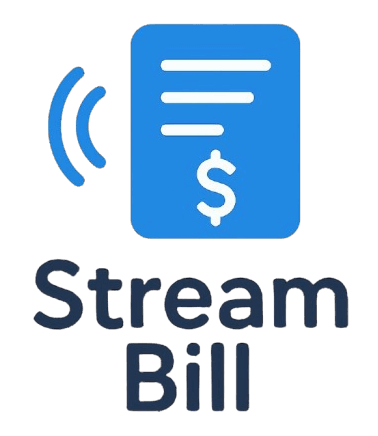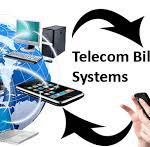As businesses and industries continue to evolve, so too do the methods they employ to charge customers for products and services. Traditional pricing models, such as flat-rate and subscription-based pricing, are being supplemented—or even replaced—by a more flexible and customer-centric approach known as usage-based charging. This model aligns a customer’s costs with the actual consumption of a product or service, rather than a fixed fee or flat rate. In this blog post, we will explore what usage-based charging is, how it works, its benefits and challenges, and why it’s gaining popularity in various industries.
What is Usage-Based Charging?
Usage-based charging, also referred to as pay-per-use or metered billing, is a pricing strategy where customers are charged based on the amount they use a service or product. Unlike fixed-price models where customers pay a set amount regardless of usage, usage-based billing connects the price directly to consumption. For example, customers could be charged for the number of minutes they use a service, the amount of data they consume, or the volume of product they purchase.
This model is most commonly seen in industries like utilities, telecommunications, cloud computing, and transportation, where the customer’s usage can be accurately measured and billed accordingly. Usage-based pricing is growing in popularity, especially as the demand for flexible, scalable, and cost-effective solutions increases.
How Does Usage-Based Charging Work?
At its core, usage-based charging is about measuring and tracking a customer’s consumption of a particular service or product and determining the price based on that data. This can involve sophisticated tracking systems that monitor usage metrics in real-time, whether it’s the number of calls made, the amount of data downloaded, or the number of kilowatt-hours of electricity used.
For businesses that use this model, the process typically includes:
- Usage Tracking: Technologies and systems are put in place to accurately measure the customer’s usage. This could involve smart meters, data analytics, or specialized software that tracks resource consumption.
- Rate Calculation: The company determines the cost per unit of usage, such as per minute, per gigabyte, or per product consumed. This rate can vary based on usage tiers or other factors.
- Billing: After measuring usage and calculating the corresponding charge, businesses issue a bill based on the total consumption during a given period.
The flexibility of this model allows businesses to adjust pricing in response to changes in market conditions, demand, or the customer’s specific needs.
Industries That Use Usage-Based Charging
Several industries have embraced usage-based charging as a more customer-centric pricing strategy. These industries are examples of how this model can be adapted to various types of businesses:
1. Cloud Computing and SaaS
Cloud computing providers, such as Amazon Web Services (AWS) and Microsoft Azure, have pioneered the usage-based pricing model. Cloud services are billed based on the customer’s actual consumption, such as the amount of storage they use, the computing power they consume, or the number of transactions they execute. This model allows businesses to pay only for what they need, making it more cost-efficient and scalable.
Similarly, Software as a Service (SaaS) providers often offer tiered pricing based on usage metrics, such as the number of users, the volume of data processed, or the number of features accessed. This provides customers with a flexible and cost-effective way to access the software.
2. Telecommunications and Internet Services
Telecommunications companies, including mobile network providers and internet service providers (ISPs), frequently use usage-based pricing models. Mobile providers charge customers based on the amount of data, text messages, or voice minutes they use, while ISPs might bill customers based on the number of gigabytes or terabytes of data consumed in a month. Usage-based charging allows consumers to choose plans that match their actual needs, rather than paying a flat fee for services they may not fully use.
3. Utilities and Energy
Electricity, water, and natural gas providers have long used usage-based billing models. Consumers are charged for the amount of electricity (measured in kilowatt-hours), water, or gas they use, which encourages energy conservation and ensures that customers only pay for what they consume. Smart meters have revolutionized this model by allowing for real-time tracking of consumption, leading to more accurate billing and improved efficiency.
4. Transportation and Ride-Sharing
Usage-based charging is also prevalent in transportation, particularly in ride-sharing services like Uber and Lyft. Customers are charged based on the distance traveled, the duration of the ride, and sometimes other factors like surge pricing. This ensures that customers only pay for the services they actually use, making the cost of transportation more transparent and flexible.
Similarly, some traditional transportation systems, like toll roads or parking meters, also operate on a usage-based pricing model. This makes it easier for customers to pay according to how much they actually use the service.
5. Health and Fitness
In the health and fitness industry, usage-based pricing can be seen in fitness centers that charge customers based on the number of sessions they attend, or wellness apps that charge users based on their activity level or usage frequency. This model can appeal to customers who only need the service occasionally or who want to pay for specific features rather than a broad membership.
Benefits of Usage-Based Charging
Usage-based charging has numerous benefits for both businesses and consumers. Some of the key advantages include:
1. Flexibility for Consumers
One of the primary advantages of usage-based pricing is its flexibility. Consumers only pay for what they use, which is especially advantageous for those who may have fluctuating needs or seasonal usage. For example, a business that experiences varying levels of cloud usage can scale their service up or down without being locked into a rigid pricing structure.
2. Cost Efficiency
With a usage-based model, customers have the opportunity to reduce costs by using only the services they need. This can result in lower overall expenses, especially when compared to subscription models where customers pay for a fixed package regardless of how much they actually use.
3. Fair Pricing
Usage-based charging is perceived as more fair by many consumers, as they only pay for the services they actually consume. This can lead to a better customer experience, as there is no “one-size-fits-all” pricing model. Customers who use services less frequently can pay less, while those with higher usage needs can scale their payments accordingly.
4. Scalability for Businesses
For businesses, usage-based pricing allows for greater scalability and flexibility in revenue generation. By aligning the pricing structure with actual usage, businesses can accommodate a wider range of customers, from those with occasional needs to those with heavy usage. This can also result in a more predictable revenue stream based on actual consumption patterns.
5. Encourages Efficient Resource Use
In industries like utilities, usage-based charging encourages customers to be more mindful of their consumption. When customers see how much they’re using and the associated costs, they may be more likely to adopt energy-saving habits, reducing waste and benefiting both the environment and the bottom line.
Challenges of Usage-Based Charging
While usage-based charging offers numerous advantages, it is not without its challenges. These include:
1. Complexity in Tracking and Billing
Implementing a usage-based pricing model requires accurate tracking of consumption, which can be technologically challenging. In some cases, businesses must invest in specialized software, meters, or sensors to measure usage effectively. Additionally, the complexity of calculating and billing usage-based charges may require more sophisticated systems, which can increase operational costs.
2. Customer Confusion
Some customers may find usage-based billing confusing, particularly if they are used to flat-rate or subscription pricing models. For example, a customer may not fully understand why their bill fluctuates each month or how their usage impacts their costs. Businesses must be transparent and provide clear communication to avoid confusion and ensure customer satisfaction.
3. Revenue Uncertainty
For businesses, usage-based charging can result in unpredictable revenue streams. If a customer’s usage suddenly decreases or spikes, the business’s revenue could fluctuate significantly. This makes it more challenging to forecast income and plan for long-term growth.
4. Risk of Overuse
In certain industries, such as utilities, the cost of overuse can be prohibitive for customers. This can create a barrier for customers who may need to use more of the service but are deterred by the higher costs associated with excessive consumption. Businesses may need to implement caps or offer tiered pricing to mitigate this risk.
Best Practices for Implementing Usage-Based Charging
For businesses considering a shift to a usage-based pricing model, there are several best practices to ensure success:
1. Invest in Accurate Usage Tracking
Accurate tracking of customer usage is the foundation of a successful usage-based pricing model. Businesses must invest in reliable technologies and infrastructure to measure consumption and ensure that customers are billed accurately.
2. Provide Transparent Billing
Clear, transparent billing is essential to customer satisfaction. Customers should be able to easily understand how their charges are calculated and what they’re paying for. Providing itemized bills or access to usage data can help reduce confusion and build trust.
3. Offer Flexible Pricing Tiers
To accommodate varying customer needs, businesses can offer flexible pricing tiers based on usage. This allows customers to choose a plan that fits their needs and gives them the option to scale their usage up or down as required.
4. Educate Customers
Businesses should educate their customers about how usage-based charging works and the benefits it provides. This can help manage expectations and reduce confusion, especially for customers who are new to this pricing model.
Conclusion
Usage-based charging is a modern, customer-centric pricing model that aligns costs with actual consumption. It offers flexibility, cost efficiency, and scalability, making it increasingly popular across a variety of industries, including cloud computing, telecommunications, utilities, and transportation. While there are challenges associated with implementation, the benefits of this pricing model make it a compelling option for businesses looking to offer more personalized and flexible solutions. As customer preferences continue to shift towards more tailored experiences, usage-based charging will likely become an even more prevalent part of the business landscape.


